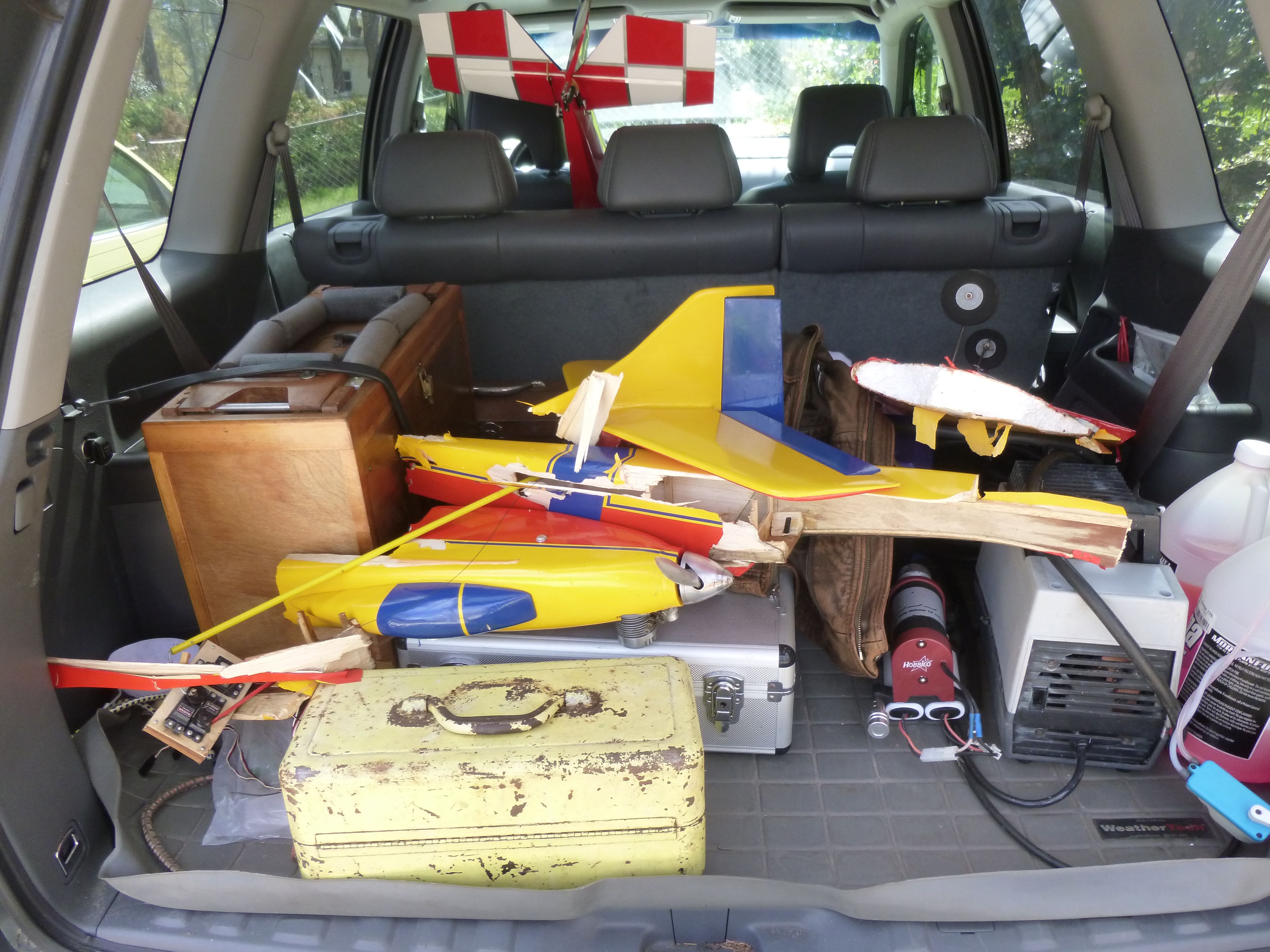
A Cautionary Tale
Our radio controlled models are sophisticated pieces of machinery with marvelous capabilities. But with these capabilities comes the potential for causing damage and harm. A moment's hesitation, a radio glitch, some malfunction, or loss of orientation can cause a model to become out of control. If this happens close to the flight line, then other pilots or spectators can be in danger. If another pilot is forced to take evasive action in order to avoid an out-of-control model, then that pilot may momentarily lose contact with his own aircraft. The resulting damage can be quite severe, as shown in the accompanying photo.

So, please, if you are flying "3D" or making low passes, do so on the far side of the runway. This may enable others to take effective action in the event of a loss of control.
The Long Walk
If you have been flying radio control models long enough, then eventually the dreaded day will come when your creation suffers a major crash. If you are lucky, then the pieces may be nearby in plain sight. On the other hand, the remains - along with valuable equipment - may be lost in the woods or in swampy terrain. Then begins the long walk. As the pilot, you are now pondering what happened, how it could have been prevented, how you will replace it, and even where it might be. The last thing you want to do is talk. But you would probably appreciate some help. Two or more sets of eyes can cut down the search time. Younger club members may be more limber and can better extract the remains. Probably the last thing you want to do is to dodge low flying models as you bring back the few pieces, if any, that you may have found. Some members understand all this and willingly join in the search. Others feel that it is more important to get in that next flight. So, the next time that you see a model crash, think about your priorities and consider joining the search. Who knows - the next long walk may be yours. And you will appreciate the help.